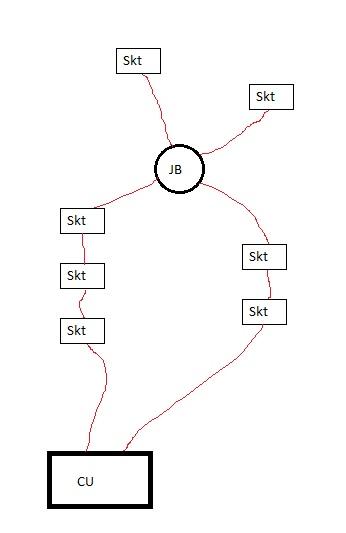Hi all,
Stumbled across an unusual piece of wiring in my house yesterday. The wiring which feeds the bedroom sockets is a normal ring for the most part - goes from CU to socket to socket to socket ... and back to the CU. However two sockets in one room are fed from a pair or spurs from a junction box.
I hope this will explain it better:
All cables throughout are 2.5mm T&E, and the ring is on a 30A breaker.
Judging by how tight one of the cables is, I think someone in the past has cut into the ring and added the junction box and the spurs.
Anyway, it seems unusual but is it "wrong"?
Thanks,
Mark
Stumbled across an unusual piece of wiring in my house yesterday. The wiring which feeds the bedroom sockets is a normal ring for the most part - goes from CU to socket to socket to socket ... and back to the CU. However two sockets in one room are fed from a pair or spurs from a junction box.
I hope this will explain it better:
All cables throughout are 2.5mm T&E, and the ring is on a 30A breaker.
Judging by how tight one of the cables is, I think someone in the past has cut into the ring and added the junction box and the spurs.
Anyway, it seems unusual but is it "wrong"?
Thanks,
Mark



